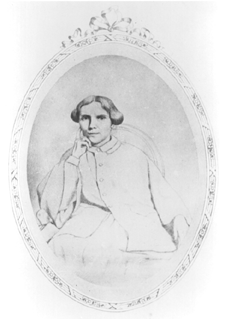Elizabeth Blackwell
Elizabeth Blackwell was born on February 3, 1821 in Counterslip Bristol,
England. Her father called her “Little Shy.” While growing up, two of her
brothers and six of her sisters died, as well as eight cousins. As a result
of all the untimely deaths in her extended family, she vowed to become
a doctor to babies and women. Elizabeth’s father and his wife Hanna, encouraged
equality among children, and unlike most girls of Europe, Elizabeth had
an education to match any boys.
When Elizabeth was 24, she decided to visit her dying friend Mary. She
told Elizabeth, “the worst part of my illness is that I am being treated
by a rough, unfeeling man.” After her friend uttered those words, Elizabeth
knew that she wanted to become a doctor. After several rejections from
medical school, she finally was accepted (as a joke) by Geneva Medical
College. People in the town thought she was an indecent woman and did not
speak to her. The other students asked her to leave. She would not leave.
She eventually graduated with high honors on January 23, 1849.
Upon graduation, she opened a store where women and children could buy
medicine. She and her sister begged families to donate money for an infirmary
for children and women. In 1857, the New York infirmary for children and
women opened its doors. It was the first true hospital for women, run by
women doctors, anywhere in the world. In 1868, the infirmary opened a medical
college for women. In 1869, Elizabeth returned to England after receiving
a letter from Europe asking her to “come to her homeland and do for the
women of Europe what you have done for America.”
In 1889, Elizabeth became the first women doctor in the United States.
She also opened a medical college for women. During the Civil, War she
organized a unit of women nurses for field service. She organized the National
Health Society. She fought for the admission of women to medical colleges.
She died on May 31, 1910. Unlike her nickname that her father gave her
Elizabeth was not shy.
Her rearing as a child, made her feel equal to any man. She excelled
as a woman and fought for what she felt was right. She ignored those who
did not speak to her, or felt she was indecent. She also chose to ignore
those who tried, in vain, to persuade her to give up the dreams she believed
in. She became the first women doctor opening a world of opportunity for
women. In 1949, an award was established in her honor. Today, the award
is given to women for outstanding achievement in medicine.

Her portrait gives the viewer a glimpse into her strong character,
through her posture. She portrays an air of relaxed strength, which served
her well during the 19th century. Ms. Blackwell exudes confidence, not
only in herself but also in her chosen field of medicine. That confidence
probably influenced many of her patients, giving them a sense of security
in her knowledge. Ms. Blackwell does not appear to be the fragile and frail
creature that most portraits of the late 19th century portrayed. Ms. Blackwell
casts a long shadow that society must acknowledge: one of strength through
endurance, determination through struggle. As a result of her initial efforts,
despite society's attempt to restrain her, women and children's medicine
continues her dream.
Author: Bobbi Dawn LeGrand and Jilda Leigh Sharp
Last Updated: October 6, 2000
Back to "Women's Studies
101 on the Web"
